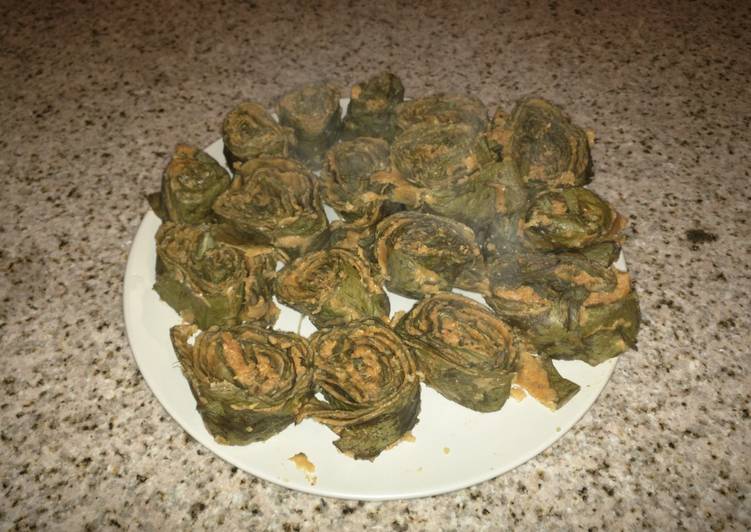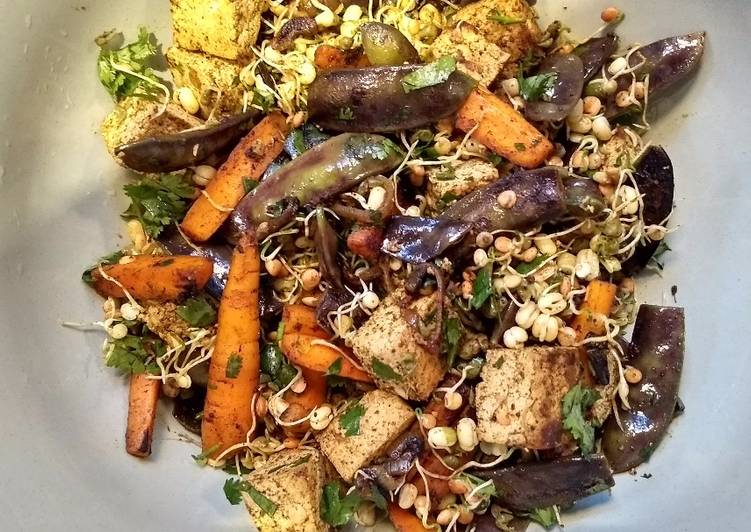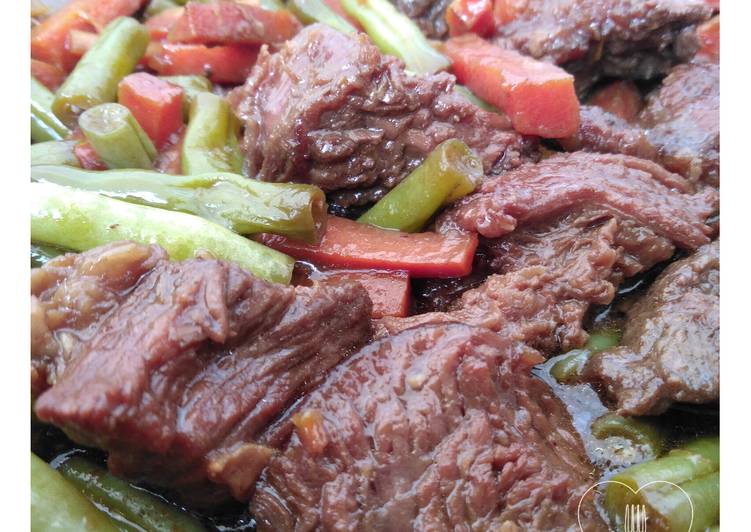
Hello everybody, it is Brad, welcome to our recipe site. Today, I’m gonna show you how to prepare a special dish, pathrode (patra). It is one of my favorites. For mine, I will make it a bit tasty. This will be really delicious.
Pathrode (Patra) is one of the most favored of current trending meals in the world. It is simple, it is fast, it tastes yummy. It is appreciated by millions every day. They are fine and they look wonderful. Pathrode (Patra) is something that I have loved my entire life.
Hi dosto welcome back to my vlog. Patrode/ Patrodo/ Patra/ Patrodu is vegetarian dish from Western coast (Konkan) & Himachal Pradesh, India. It is known as Patra in Gujarat, Patrodo in Maharashtra (especially in Malvan) & Goa.
To begin with this recipe, we have to first prepare a few components. You can cook pathrode (patra) using 12 ingredients and 17 steps. Here is how you cook it.
The ingredients needed to make Pathrode (Patra):
- Get Colocasia leaves (Patra leaves)
- Prepare Rice, soaked for about 6 hours or overnight
- Get dried red chillies
- Make ready coriander seeds (sabut dhaniya)
- Take cumin seeds (sabut jeera)
- Prepare shredded coconut
- Prepare tamarind, lemon sized lump
- Prepare Fenugreek (methi) seeds
- Get salt, to taste
- Get water, as needed
- Get butter
- Take oil (optional)
That includes Bamboo shoots/keerlu, raw jack fruit/kadgi, bread fruit/jeev kadgi, kantola/pagiLa. In addition, using leaves one can prepare curry, daal curry, saambar and a famous dish called patra or pathrode. Pathrode is a delicious winter and monsoon dish prepared in Karnataka. Patra - An interesting savory snack from the state of Gujrat, India!
Steps to make Pathrode (Patra):
- Prep the colocasia leaves. Wash them well, and pat dry.
- Flip the leaves over, and strip off the thick spines of the leaves. The sap from these stems can cause throat itches and irritation. They are also fibrous, and quite unpleasant in the mouth. It is alright of the leaves are slightly damaged.
- Blend all the other ingredients (rice, coconut, red chillies, coriander, cumin, tamarind, salt, fenugreek, little bit of water to help blend) into an almost fine paste. The paste should have a spreadable consistency, and a grainy texture.
- IMPORTANT: Taste the paste at this time - there's no fixing the paste later. The leaves themselves have a very mild flavor, so the flavors on the paste ought to be a bit strong. You should be able to taste the zing from the tamarind, the heat from the chillies, and the salt a bit stronger than you normally would like.
- Now for the messy and fun bit. Ensure that you have a clean, dry workspace. Lay the biggest colocasia leaf you can find, face down on the surface. Smear a dollop of the prepared paste on the entire leaf.
- Lay another (smaller) leaf on top of the first leaf, again, face down. Smear a dollop of the spiced paste on this leaf too.
- Repeat with about 5 or 6 leaves.
- Once that's done, begin rolling all the leaves into a tight cylinder. Do this by folding the wider sides of the leaves inwards and then rolling from the bottom of the leaves toward the pointy sides. Make sure that the roll is tight, and not much of the spice paste oozes out. A little of the paste should be visible from the outside, it gives the final dish a great look and great taste.
- Keep the roll aside, and prepare similar rolls with the rest of the leaves. You should be able to prepare about 4-5 rolls.
- Prepare a water bath for steaming the rolls. Note that you need to steam the rolls, and not boil them.
- Once the water starts boiling, place the rolls into the hot steam, and close with a tight lid.
- Let the rolls cook in the steam for about 30 minutes.
- Once you remove from the steam, let it cool down a bit, and use a sharp knife to cut smaller cylinders out of these rolls.
- OPTIONAL: If you have some of the spice paste left over, smear a light layer on top of the pieces of pathrode, and lay on a hot griddle. Drizzle oil or ghee on top to shallow fry the pieces. Fry until there are brown spots all over. This happens from the sugars in the coconut and rice caramelizing. This is optional, and the pieces taste great as is.
- Serve with a dollop of butter on top of each piece, and enjoy the dish hot!
- NOTE: If you have an itchy throat while you eat this dish, drink a glass of buttermilk or have some yogurt. If the dish is cooked right, you should not have an itchy throat. The tamarind should take care of the itchiness from the leaves.
- OPTIONAL: If the ingredients disintegrate when you steam them, no problem. Roughly shred everything. In a pan, take some oil. Once the oil is hot, add some mustard seeds, black gram (urad dal split), red chilli flakes, curry leaves. Once the mustard seeds splutter, and the shreds of pathrode, and add some sugar. Toss for a minute and serve hot!
Interesting, because, I experienced a complete medley of tastes from this snack. Pathrode, rice and ankre tambli is the tastiest and very healthy combination I have ever had. I took these pictures are my native when my aayi prepared these delicious pathrade using the fresh leaves. Ask any Gujarati about the snacks popular in the state, and they'll mention patra. How to make Patra - Step by Step - A favorite snack of Gujaratis, Maharashtrians and Konkanis by GoJingalala Cooking.jingalala.org.
So that is going to wrap this up with this special food pathrode (patra) recipe. Thank you very much for reading. I’m sure that you can make this at home. There’s gonna be interesting food at home recipes coming up. Don’t forget to save this page in your browser, and share it to your family, colleague and friends. Thank you for reading. Go on get cooking!

